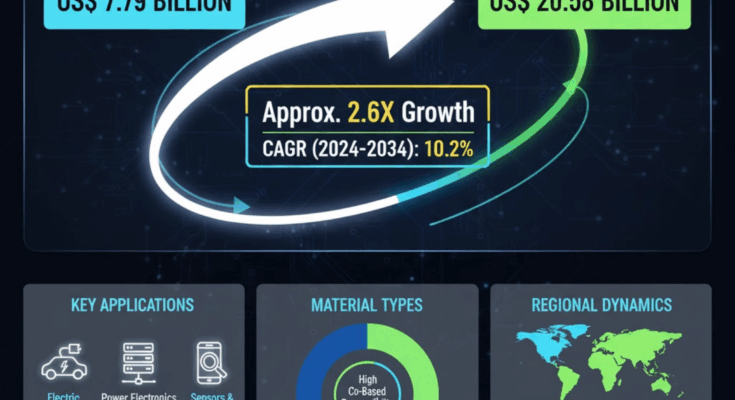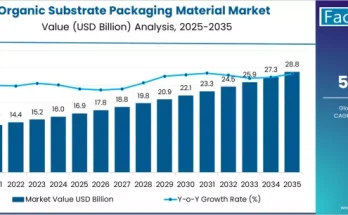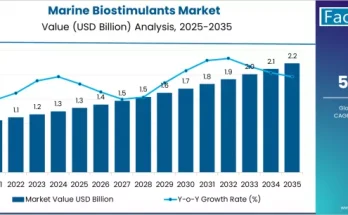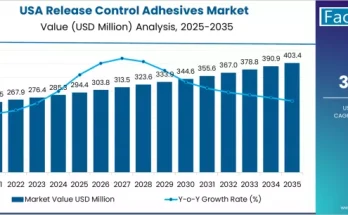According to a recent market study by Fact.MR titled “Nanocrystalline Soft Magnetic Materials Market Study by One, Two, and Three Dimensional for Transformers, Motors, Inductors, and Generators from 2024 to 2034”, the global nanocrystalline soft magnetic materials (NCSMM) market is forecast to grow from approximately US$ 7.79 billion in 2024 to reach US$ 20.58 billion by 2034, registering a strong compound annual growth rate (CAGR) of 10.2 % over the decade.
Key Growth Drivers
Electrification of Transport and Power Electronics:
The increasing demand for electric vehicles (EVs), hybrids, and components such as inverters, onboard chargers, DC–DC converters, and motors is a major driver of the market. These applications require high-performance materials that enhance efficiency, reduce volume, improve thermal stability, and minimize energy losses.
Miniaturization and High-Frequency Operation:
As power electronics continue to shift toward higher frequencies and more compact designs, nanocrystalline soft magnetic materials are becoming the material of choice. They offer excellent permeability, high saturation flux density, and stable performance over wide temperature ranges, typically from −25 °C to 120 °C, and even up to 180 °C for specialty grades.
Electromagnetic Interference (EMI) Shielding and Sensor Applications:
The growing concern over interference in consumer electronics, communications, and automotive systems is boosting the demand for shielding materials. Additionally, thin nanocrystalline films are being utilized in magnetic sensors, flat inductors, and magneto-electronic devices, further expanding their scope of applications.
Market Segmentation Insights
By Classification:
Three-dimensional nanocrystalline soft magnetic materials dominate the market in both value and growth trajectory, expected to reach approximately US$ 10.06 billion by 2034. Their ability to deliver higher magnetic flux and better performance across varied applications gives them a competitive advantage.
By Application:
The semiconductor sector represents one of the key end-use industries, with demand forecasted to increase at around 9.3 % CAGR through 2034. The reliance of the semiconductor industry on inductors, transformers, and EMI shielding materials highlights the importance of nanocrystalline materials in driving efficiency and performance.
By Region:
-
North America accounts for about 23.1 % of the global market in 2024, driven by technological innovations and rapid adoption of EVs and renewable energy systems.
-
United States is projected to grow at approximately 11.1 % CAGR, rising from US$ 1.29 billion in 2024 to US$ 3.7 billion by 2034.
-
East Asia, Japan, and Germany are also emerging as important growth markets, backed by advancements in automotive, electronics, and infrastructure sectors.
Challenges and Opportunities
While the long-term outlook remains promising, the market does face a few challenges:
Manufacturing Complexity and Cost:
Producing ultrathin amorphous precursors and achieving precise annealing and crystallization processes require advanced thermal control and specialized automation equipment. Maintaining strip thickness near 20 μm and rapid cooling rates in the range of hundreds of thousands of °C per second adds to technical and financial challenges.
Raw Material Price Volatility:
Dependence on specialty alloying elements and rare earths makes manufacturers vulnerable to fluctuations in raw material prices. Supply chain disruptions and geopolitical tensions further amplify this challenge, impacting cost and availability.
Regulatory and Quality Constraints:
Nanocrystalline materials undergo stringent testing, including temperature cycling and salt spray tests, often requiring extended qualification periods that can exceed six months. These lengthy approval timelines can delay market entry and raise overall production costs.
However, these challenges also present significant opportunities. Ongoing research and development into improved alloys, scalable manufacturing processes, and new application domains—such as magnetoelectronics, precision sensors, and compact inductors—are expected to open new revenue channels for industry players.
Competitive Landscape
The global nanocrystalline soft magnetic materials market is characterized by the presence of several key manufacturers that are actively investing in innovation, technology upgrades, and expansion. Leading companies include:
-
Hitachi Metals
-
Qingdao Yunlu Energy Technology Co. Ltd.
-
VACUUMSCHMELZE
-
Advanced Technology
-
Foshan Huaxin
-
Henan Zhongyue
-
Bomatec
These companies are focusing on improving product quality, achieving cost efficiency, and expanding into high-growth regions such as Asia-Pacific and North America. Collaborations, mergers, and acquisitions are also being adopted to strengthen market positions and enhance technological capabilities.
Long-Term Outlook
The future of the nanocrystalline soft magnetic material market looks extremely promising. Over the next decade, the industry is expected to not only grow in scale but also diversify in technology and application. Key trends that will shape the market include:
-
Development of advanced alloys with higher thermal stability and permeability to meet the evolving demands of high-efficiency motors, inverters, and transformers.
-
Expansion of applications into power electronics, renewable energy, and next-generation communication systems such as 5G and 6G.
-
Continuous innovation in 2D and 3D nanocrystalline structures that will enable new designs in sensors, compact transformers, and high-frequency inductors.
-
Increasing emphasis on sustainability, efficiency, and energy savings across industrial sectors, driving wider adoption of soft magnetic materials globally.
Browse Full Report: https://www.factmr.com/report/771/nano-crystalline-soft-magnetic-materials-market



